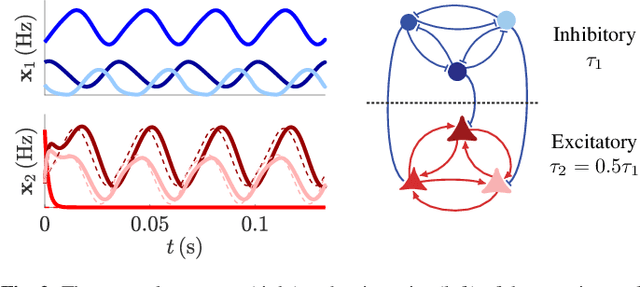Hierarchical Selective Recruitment in Linear-Threshold Brain Networks - Part II: Inter-Layer Dynamics and Top-Down Recruitment
Paper and Code
Sep 05, 2018



Goal-driven selective attention (GDSA) is a remarkable function that allows the complex dynamical networks of the brain to support coherent perception and cognition. Part I of this two-part paper proposes a new control-theoretic framework, termed hierarchical selective recruitment (HSR), to rigorously explain the emergence of GDSA from the brain's network structure and dynamics. This part completes the development of HSR by deriving conditions on the joint structure of the hierarchical subnetworks that guarantee top-down recruitment of the task-relevant part of each subnetwork by the subnetwork at the layer immediately above, while inhibiting the activity of task-irrelevant subnetworks at all the hierarchical layers. To further verify the merit and applicability of this framework, we carry out a comprehensive case study of selective listening in rodents and show that a small network with HSR-based structure and minimal size can explain the data with remarkable accuracy while satisfying the theoretical requirements of HSR. Our technical approach relies on the theory of switched systems and provides a novel converse Lyapunov theorem for state-dependent switched affine systems that is of independent interest.
 Add to Chrome
Add to Chrome Add to Firefox
Add to Firefox Add to Edge
Add to Edge